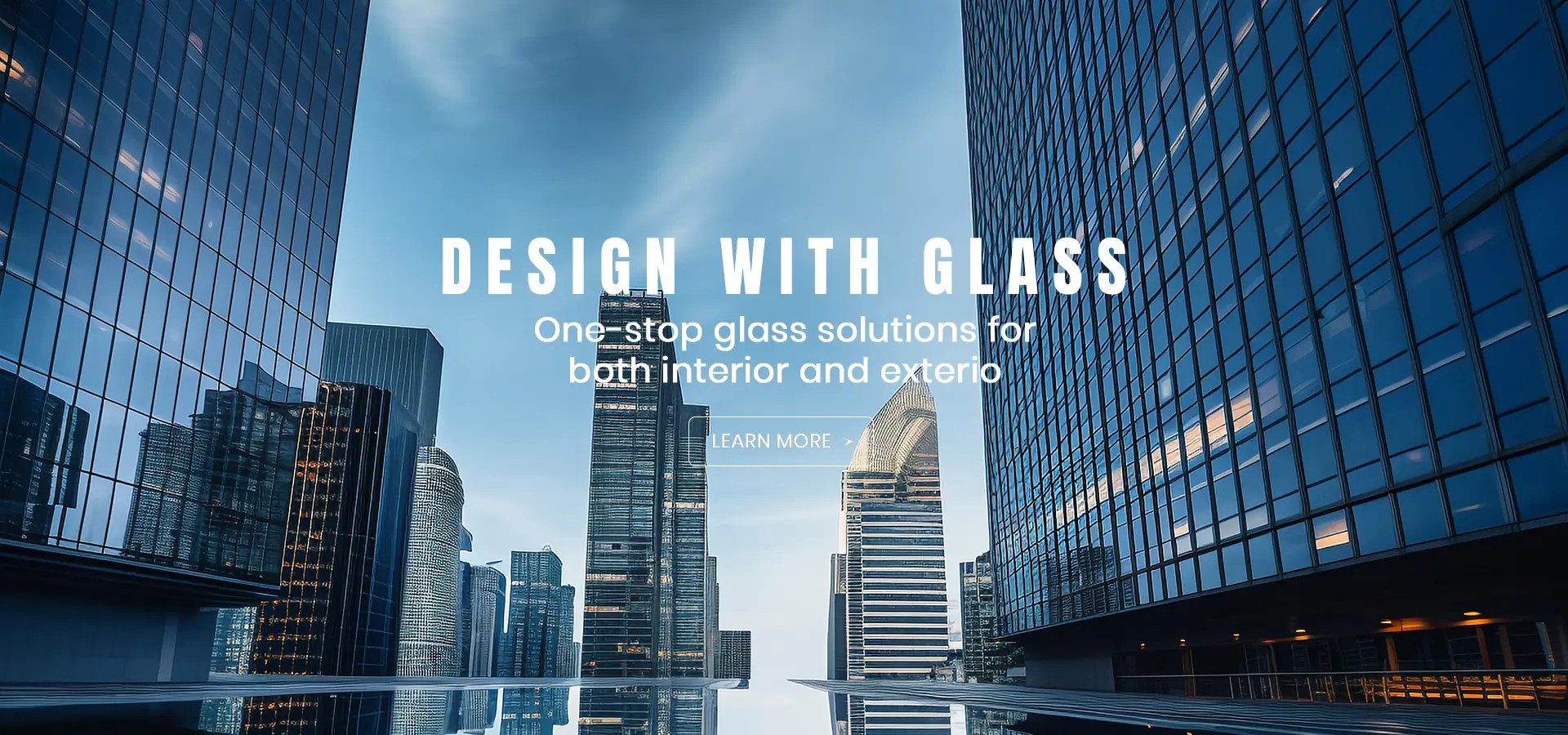The Role of Float Glass in Construction
In the construction industry, the choice of materials can significantly impact both the aesthetic and functional attributes of buildings. Among these materials, float glass has emerged as a pivotal component in modern architecture, offering a blend of durability, versatility, and aesthetic appeal. This article delves into the various applications and advantages of float glass in construction, highlighting its growing importance in contemporary building practices.
Understanding Float Glass
Float glass is produced through a unique manufacturing process in which molten glass is floated on top of molten tin. This method results in a glass sheet that is smooth, uniform, and free from distortions. As a result of this process, float glass possesses superior optical clarity and thickness, making it an ideal choice for a variety of construction applications.
Applications of Float Glass in Construction
1. Windows and Facades One of the most common uses of float glass in construction is in windows and building facades. Its clarity allows for natural light to penetrate interior spaces while providing unobstructed views of the outside world. Float glass can be used in single or double-glazing systems, enhancing energy efficiency by reducing heat transfer.
2. Curtain Walls Float glass is frequently employed in curtain wall systems, which are non-structural cladding systems attached to the frame of a building. These walls provide aesthetic appeal while allowing large expanses of glass to create a modern look. They also offer excellent insulation properties, which is vital for energy conservation in large commercial buildings.
3. Interior Partitions In contemporary office buildings and commercial spaces, float glass is increasingly used for interior partitions. These glass walls create an open and airy environment while maintaining privacy through the use of frosted or tinted finishes. This application facilitates contemporary office design trends that emphasize collaboration and fluidity in workspace layouts.
4. Balustrades and Railings Safety and aesthetics combine in the use of float glass for balustrades and railing systems. These glass installations provide unobstructed views in staircases and balconies while adhering to safety standards. The strength of float glass ensures that these installations are both secure and visually appealing.
float glass used in construction
5. Skylights and Roof Glazing Float glass is commonly used in skylights and roof glazing, allowing natural light to flood interior spaces. This not only reduces the need for artificial lighting but also enhances the overall atmosphere of a building. The ability to create custom shapes and sizes makes float glass a versatile choice for architects.
Advantages of Float Glass in Construction
1. Energy Efficiency Float glass can be engineered to have high thermal performance. Low-emissivity (Low-E) coatings can be applied to increase insulation properties, helping to minimize energy consumption in heating and cooling.
2. Durability and Maintenance Float glass is resistant to weathering and can withstand environmental stressors, making it suitable for a variety of climates. Its smooth surface also makes it easy to clean and maintain, contributing to the longevity of building aesthetics.
3. Safety and Security While standard float glass can be susceptible to breaking, treatments such as tempering and lamination enhance its safety characteristics. Tempered float glass is much stronger and shatters into small, harmless pieces, while laminated glass holds together even when broken, providing an added layer of security.
4. Sustainable Building Option With the construction industry focusing more on sustainability, float glass plays a role in eco-friendly building solutions. It can be recycled and is often manufactured using recycled materials, contributing to reduced environmental impact.
Conclusion
Float glass has revolutionized the construction landscape with its myriad applications and benefits. As architects and builders continue to seek materials that combine functionality with aesthetic grace, float glass stands out as a preferred choice. Its ability to enhance natural lighting, provide energy efficiency, and offer design flexibility makes it integral to modern construction practices. With advancements in technology and a growing focus on sustainable building, the role of float glass in construction is poised to expand even further in the coming years.
 Afrikaans
Afrikaans  Albanian
Albanian  Amharic
Amharic  Arabic
Arabic  Armenian
Armenian  Azerbaijani
Azerbaijani  Basque
Basque  Belarusian
Belarusian  Bengali
Bengali  Bosnian
Bosnian  Bulgarian
Bulgarian  Catalan
Catalan  Cebuano
Cebuano  Corsican
Corsican  Croatian
Croatian  Czech
Czech  Danish
Danish  Dutch
Dutch  English
English  Esperanto
Esperanto  Estonian
Estonian  Finnish
Finnish  French
French  Frisian
Frisian  Galician
Galician  Georgian
Georgian  German
German  Greek
Greek  Gujarati
Gujarati  Haitian Creole
Haitian Creole  hausa
hausa  hawaiian
hawaiian  Hebrew
Hebrew  Hindi
Hindi  Miao
Miao  Hungarian
Hungarian  Icelandic
Icelandic  igbo
igbo  Indonesian
Indonesian  irish
irish  Italian
Italian  Japanese
Japanese  Javanese
Javanese  Kannada
Kannada  kazakh
kazakh  Khmer
Khmer  Rwandese
Rwandese  Korean
Korean  Kurdish
Kurdish  Kyrgyz
Kyrgyz  Lao
Lao  Latin
Latin  Latvian
Latvian  Lithuanian
Lithuanian  Luxembourgish
Luxembourgish  Macedonian
Macedonian  Malgashi
Malgashi  Malay
Malay  Malayalam
Malayalam  Maltese
Maltese  Maori
Maori  Marathi
Marathi  Mongolian
Mongolian  Myanmar
Myanmar  Nepali
Nepali  Norwegian
Norwegian  Norwegian
Norwegian  Occitan
Occitan  Pashto
Pashto  Persian
Persian  Polish
Polish  Portuguese
Portuguese  Punjabi
Punjabi  Romanian
Romanian  Russian
Russian  Samoan
Samoan  Scottish Gaelic
Scottish Gaelic  Serbian
Serbian  Sesotho
Sesotho  Shona
Shona  Sindhi
Sindhi  Sinhala
Sinhala  Slovak
Slovak  Slovenian
Slovenian  Somali
Somali  Spanish
Spanish  Sundanese
Sundanese  Swahili
Swahili  Swedish
Swedish  Tagalog
Tagalog  Tajik
Tajik  Tamil
Tamil  Tatar
Tatar  Telugu
Telugu  Thai
Thai  Turkish
Turkish  Turkmen
Turkmen  Ukrainian
Ukrainian  Urdu
Urdu  Uighur
Uighur  Uzbek
Uzbek  Vietnamese
Vietnamese  Welsh
Welsh  Bantu
Bantu  Yiddish
Yiddish  Yoruba
Yoruba  Zulu
Zulu 

